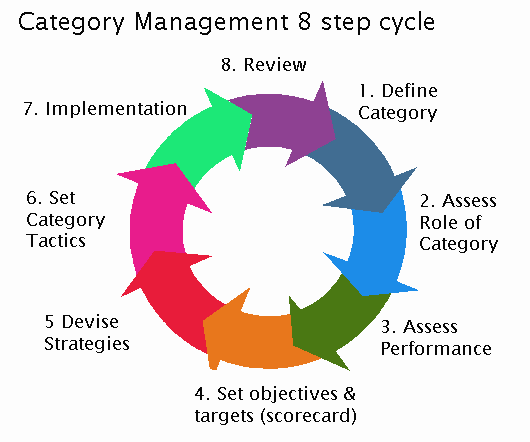 Whilst researching and writing, “The Shopper Marketing Revolution” which I wrote with Mike Anthony, I got the opportunity to speak with and get to know Dr. Brian Harris. Back in 1989, Brian effectively ‘invented’ Category Management by publishing an 8-step process which has guided collaboration between retailers and consumer goods companies for the last 23 years.
Whilst researching and writing, “The Shopper Marketing Revolution” which I wrote with Mike Anthony, I got the opportunity to speak with and get to know Dr. Brian Harris. Back in 1989, Brian effectively ‘invented’ Category Management by publishing an 8-step process which has guided collaboration between retailers and consumer goods companies for the last 23 years.
I asked Brian what the advent of Shopper Marketing meant for Category Management and his response was interesting. Brian sees Shopper Marketing as the latest evolutionary step of retail marketing, which began in the 70’s with product scanning and has passed through category management, ECR and into collaborative CRM.
In our book we take a different view. We make the case that shopper marketing creates a revolution in consumer goods marketing in general. We believe that the traditional core of consumer goods marketing; the idea that brands succeed by creating massive awareness and converting this awareness through massive distribution; cannot survive in a world of democratic media and dynamic retail structures. We advocate that by expanding the focus of marketing to drive the creation of different consumption behaviors by changing purchase behaviors, marketing becomes more complete and more effective.
So is category management dead then?
Well Brian accepts that the collaborative process he originally created is perhaps a little unwieldy today but he asserts that as a core retail practice category management will continue into the future. We agree; retailers cannot and should not put aside the imperative to grow category sales and we believe shopper marketing enables suppliers to work better with retailers by sharing a common understanding of shopper behavior.
This doesn’t mean that shopper marketing is a “big retail thing” nor does it mean that we advocate “doing category management”. Far from it, but we think many practitioners risk getting hung up as the confuse shopper marketing with category management and this does need clearing up.
First things first, let’s be clear that shoppers shop everywhere and not just in organized supermarket chains. If you really want to create a complete picture of how best to market your brands to consumers and shoppers you have to consider all the environments people shop in from small independent retailers, c2c portals, e-commerce sites and hypermarkets, to name but a few. Category management by contrast is only fully applied by a small group of very well organized (generally grocery) retailers.
Further, category management is a choice, not a business imperative, for most manufacturers. This choice has some significant advantages but comes at a stiff price to. Category management can be an extremely effective way of securing retail implementation from retailers who have a synchronous shopper profile with a brand, but the category management process can be costly and if the chosen retail partner is not effective at implementation this cost can be wasted. Shopper marketing helps make this choice work more effectively.
Companies who want to work really well with their customers using category management today have to start with a clear understanding of which consumers they are targeting and what they want them to do. Knowing this enables them to target shoppers and shopper behavior more clearly and helps define which channels they should prioritize. This makes selecting a retail partner easier and further creates clarity of the outcomes that will work best in retail environments.